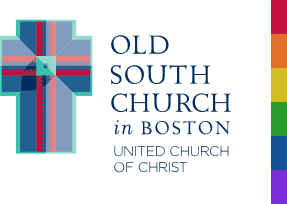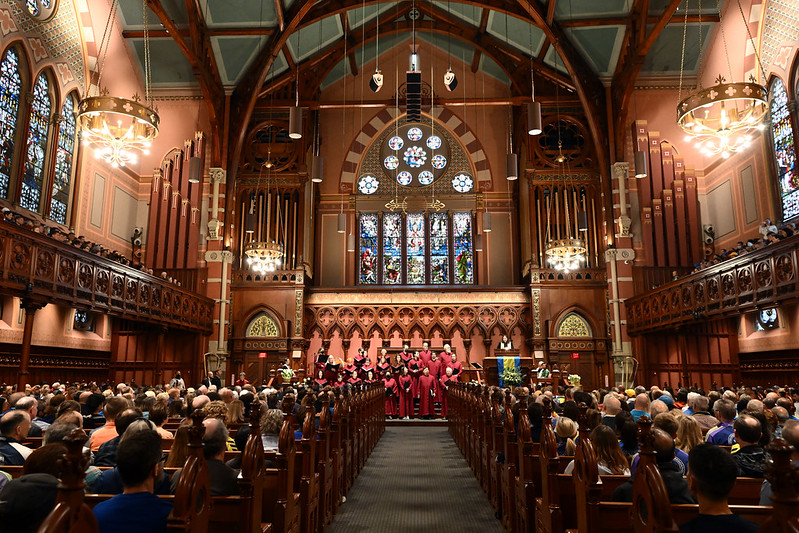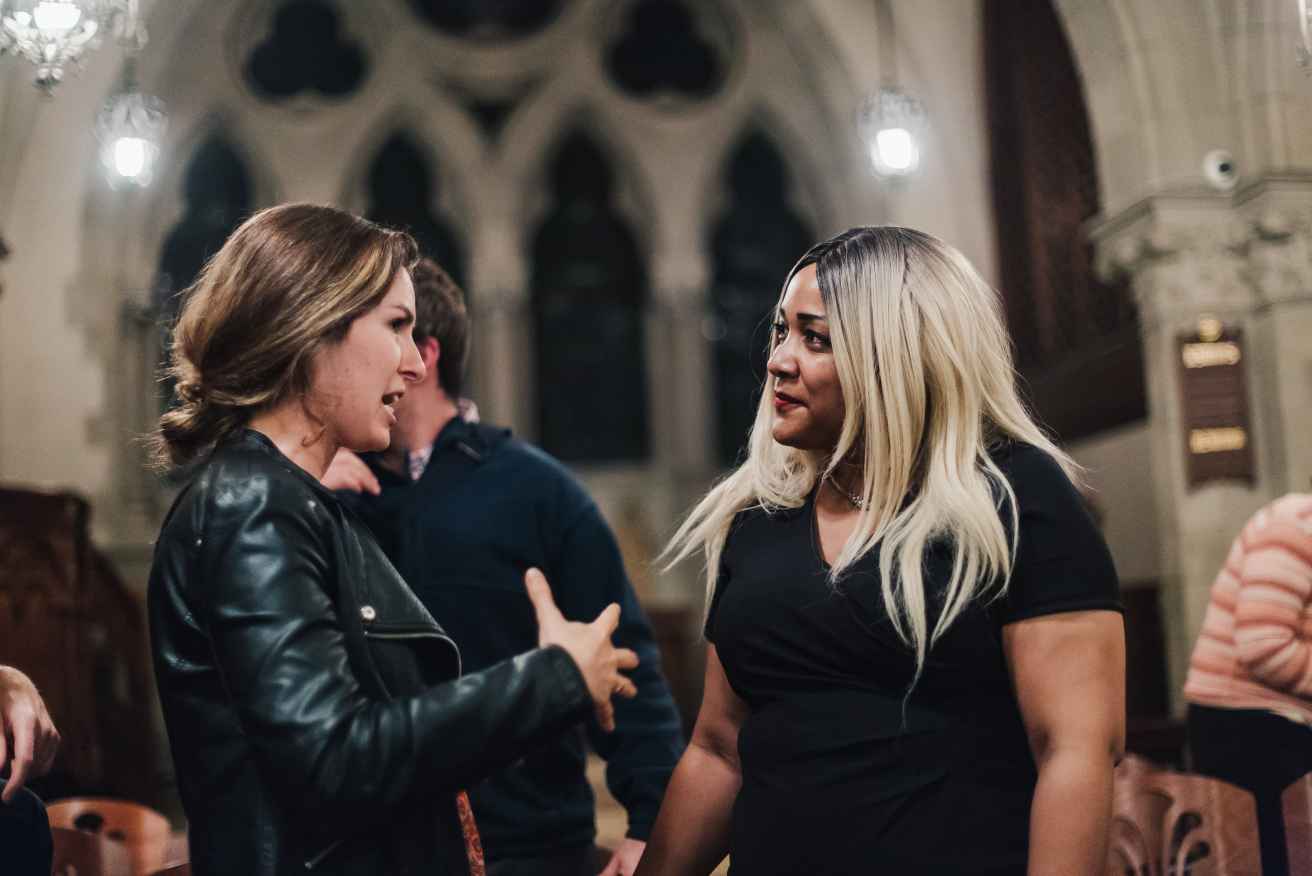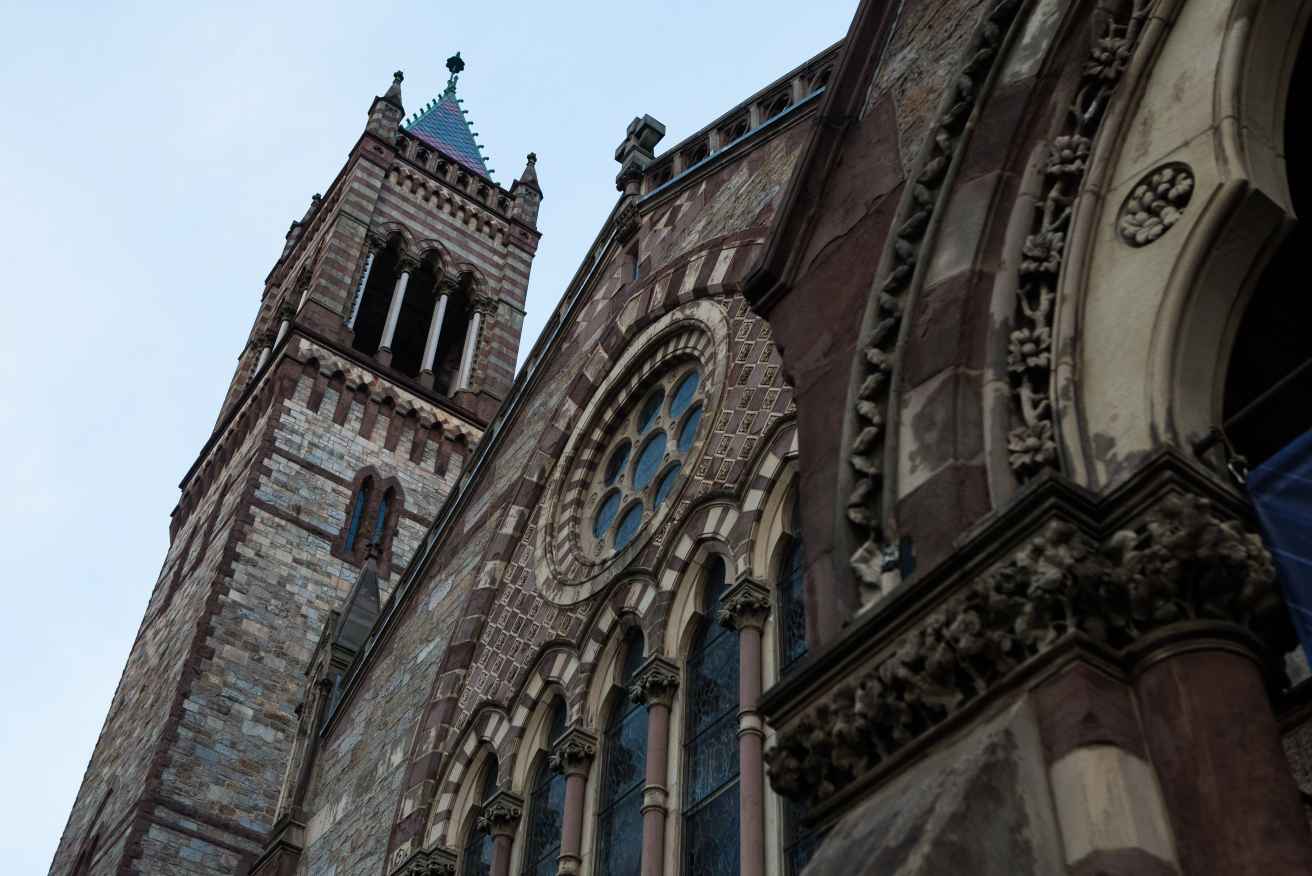Festival Worship - Twelfth Sunday after Pentecost
Festival Worship - Twelfth Sunday after Pentecost
The Best Book Ever
Blessed are those who read aloud the words – even words like harlotry and words like vanity and words like exile and vision – blessed are they who read aloud such words, and blessed are those who hear, and blessed are those who keep what is written therein. The “therein” about which John was writing: the Bible.
The Bible is a big book and an old book; it’s thick and dense. It is an intimidating book to some, but a life-line to others.
It was written over thousands of years by many hands. The earliest parts of it were written not long after the invention of the alphabet. Imagine early writers, armed with alphabet and parchment, taking ancient stories – stories that circulated in oral tradition, circulated at night by the campfire (the story of Creation, of Adam and Eve, of the Serpent, of Cain and Able, the Tower of Babel, Noah and his ark), stories that has been passed on generation to generation, campfire to campfire, family to family, tribe to tribe, all across and up and down the Great Rift Valley – imagine early writers taking these stories and forming them into alphabet and pouring the words onto parchment, creating scrolls and scrolls of words and stories. And in the process, in the pouring of the words, the pouring of alphabet onto parchment, the stories, once warm and fluid under the artistry of the bard, now laid out into parchment cool, harden, congeal and set.
Our Bible is fundamentally different than the sacred texts of most other traditions. The Qur’an, the sacred text of Islam, is a series of speeches. The Sutra’s of Buddhism are discourses: short discourses, medium discourses and long discourses.
By contrast, the Bible of Judaism and the New Testament of Christianity are largely, even relentlessly story: Even the non-story parts (even the begats and the lists of laws, the proverbs and the psalms) are in the end, in the service of story: the story of what it means to be alive …
what it is to subdue the ever-encroaching chaos, what it is to make meaning of these lives -- even as we undertake to procure food, to find shelter, to rear children, to defend ourselves from all attacks … The stories of our Bible are meaning making. And, the special burden of our holy texts: to address what it means to do all these things, to live these lives, in relationship with something ultimate.
By a show of hands, how many of you own a bible? (Most hands are raised) A recent survey reveals that the vast majority (close to 90%) of American households own at least one Bible. Even the majority of those who describe themselves as hostile to the Bible or skeptical of the Bible, own one. Not only is the Bible the best-selling book of all time, it is the best-selling book of the year, every year.
Let’s put this differently: Nearly 90% of households own a least one Bible (the average household owns four), which means this: Bible publishers manage to sell some 25-million copies a year of a book almost everyone already has! (The New Yorker, December 2006)
Millennials and Gen-Xers are the least likely to own a bible… but they own them nevertheless:
(82% of Millennials and 86% Gen-Xers Boomers). Ninety percent of Boomers have Bibles. Ninety-three percent of Elders have Bibles.
Ninety-five percent of African-Americans own a Bible compared to Hispanics (88%) and Whites (87%).
And there’s this: While nearly 90% of Americans own Bibles, only Half of Americans are (per the definition of the Barna Group, and evangelical survey organization) “Bible users”; that is, they engage with the Bible by reading, listening to or praying with the Bible on their own at least three to four times a year.
By a show of hands, how many of you or, how many of your families have a “Family Bible”? A family Bible is a Bible handed down through a family, with each successive generation recording within it the family's history: births, deaths, baptisms, confirmations and marriages. In utilizing a Family Bible, a family proclaims their place in the parade of God’s people across the generations.
I have brought a few of this Church’s family Bibles out for you to see after worship:
A Danish Bible printed in 1695 once owned by Samuel Sewell. The Mount Vernon Congregational Church’s Bible printed in 1871 and rescued from fire. My favorite, the Bible presented by Sir Francis Wilkes to the newly built Old South Meetinghouse in 1730. Printed in 1716, it is the Bible Samuel Adams and Phillis Wheatley and Samuel Sewell would have heard read from the pulpit of the Meetinghouse.
The Christian Bible is big and messy. It’s even argumentative, even with itself. One author avers in no uncertain terms that God is love while another describes a fierce, even ferocious God: God as a consuming fire, or a leopard running down its prey.
And, speaking of argumentative did you know that those who in our Bible are designated “Friends of God,” have this in common: they argue with God. Abraham and God argued back and forth like an old married couple, while Job, yelled at and railed against God. Abraham and Job have the distinct honor of being called friends of God.
The Bible is big and messy and it’s not streamlined. There was a guy back in in the 2nd century, a guy named Tatian: a Syrian Christian writer and theologian. Tatain noticed the New Testament isn’t stream-lined. He was bothered by the fact of four different Gospels (four different stories of Jesus) that sometimes contradict themselves; and, which at the least, present four distinct versions of what Jesus said and did.
Tatian had the idea of streamlining Mathew, Mark Luke and John; of harmonizing them; eradicating the messiness, the unruliness. He took Matthew, Mark, Luke and John and mushed and fused and forced and massaged them together into a large glob. However, in the end, what Tatian achieved wasn’t all that harmonious. In the end, instead of four marvelous, sharp, distinct portraits of Jesus, we got one blobby one. At the end of the day the church rejected Tatian’s attempt and settled on living with the richness, and sometimes the contradictions and messiness of the four, rather than the stream-lining, or harmonizing of the four into one.
But, here’s the thing about our Bible: throughout the stories of the Bible – from the garden in Genesis to the Golden City of the Book of Revelation, throughout the whole, long, winding, tangled sixty-some-odd books with all its characters; with Noah in his shame and drunkenness,
Moses with his lisp or stutter, Paul with his thorn in the flesh, Mary with her song, Ruth with Naomi – here’s the thing: all the characters are looking up. They are all looking up, squinting hard, straining to gain a glimpse of the great thrumming mystery at the heart of it all. they are aware of and preoccupied with the sense that they are responsible to and in relationship with some higher power.
To engage with the Bible is to observe our ancestors looking up, proclaiming with that upward gawp that this business of living, of being alive, of pilgrimage and journey – and, too, the business of dying to which we will all get around – it is not just about us, or between and among us. There is a higher SOMETHING, a being who defies time and space, by whom we are related; by whose design we are our brothers and our sisters keepers, or should be; a being and force, a personality by whose design justice matters, and forgiveness is the highest, if also the hardest, of all the virtues.
In the world of the big messy book of the Bible, in the end it isn’t riches that matter in the end, or power … but goodness, generosity … which makes our Bible some very special thing.
The Bible, and the people of the Bible – Abraham and Sarah, Samson and Delilah, Martha and Mary, Priscilla and Aquila, Cain and Able – either because, or just as often, despite themselves, call us to account, call us to live to and by the divine plumb-line by which God measures us. The Bible and its characters, its people, its heroes and villains, are forever shouting above all the world’s wars and all the world’s greed and all the world’s walls that we matter to each other, because we matter to God. This old messy book shouts that the earth matters, creation matters – the heaving, warming, convulsing, rebelling earth matters; the white rhino and the right whale, the polar bear and the koala bear matter – because they matter to God.
If you have worshipped with us at Old South Church you probably know that we take the Bible pretty seriously. We read it together in worship. We break it open, dissect and inspect it in sermons. We take a magnifying glass to it in Bible study. We like to say at this church that we take the Bible too seriously to read it literally.
Your clergy have spent not a little time and not a little money learning about this book. We are interested in what its authors say, both on the face of it, and with understandings informed by archeology, anthropology, textural and source criticism, language, gender studies, and more. We take it so seriously, in part because it’s such a potent book: as sharp as any two edged sword. In the wrong hands, it can kill. In the hands of the KKK, of the Christian Identity Movement, in the hands of white supremacists in Charlottesville, it can kill. In the wrong hands it has wrought murder in God’s name.
But, in the right hands the Bible is life and blessing. In the right hands it has freed the enslaved, healed the broken, welcomed the refuge, befriended the leper.
We take it so seriously because there is so much at stake here.
So, church, blessed are those who read aloud the words – even words like harlotry and words like vanity and words like exile and vision – blessed are they who read aloud such words, and blessed are those who hear, and blessed are those who keep what is written therein.
________________________
NOTE Today is the anniversary of the birthday in 1881 of Cecil B. deMille (born August 12, 1881 in Ashville MA) the film director. His Ten Commandments was his last and most famous film, (1956). Adjusted for inflation, The Ten Commandments is the 7th highest grossing film of all time. Filmed on location in Egypt, Mount Sinai and the Sinai Peninsula, it starred Charlton Heston as Moses and Yul Brenner as Pharaoh.
Today is also the anniversary in 1988 (August 12) of the release of another biblical film, the Last Temptation of Christ, which was not received quite as warmly as the Ten Commandments. Directed by Martin Scorsese it starred Willem Dafoe as a very human Jesus, who struggles with various forms of temptation including fear, doubt, depression, reluctance and lust. Based on the novel by Nikos Kazantsakis, the release of The Last Temptation of Christ sparked outrage and protest across the nation.







